Kameshwar Poolla
Semantic segmentation of longitudinal thermal images for identification of hot and cool spots in urban areas
Oct 06, 2023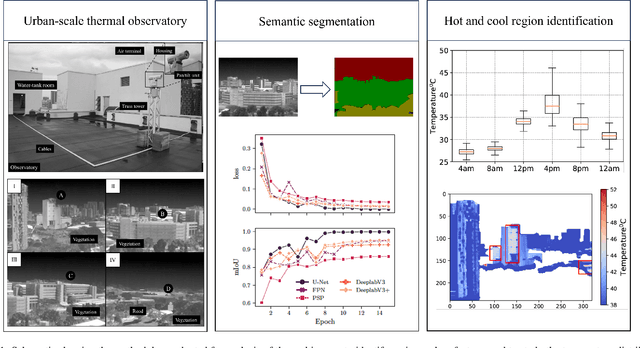
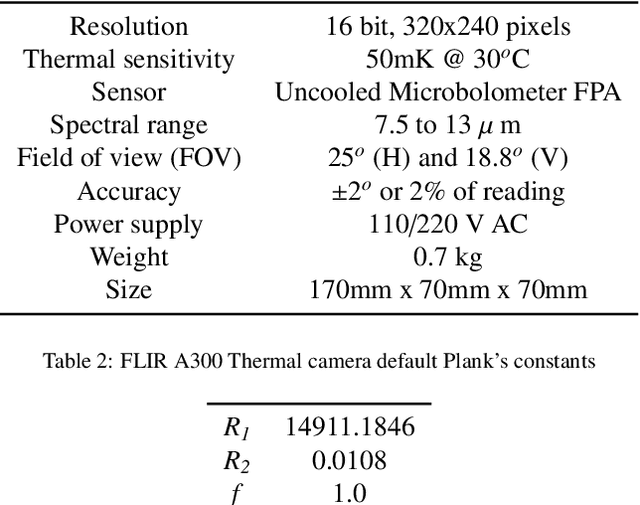
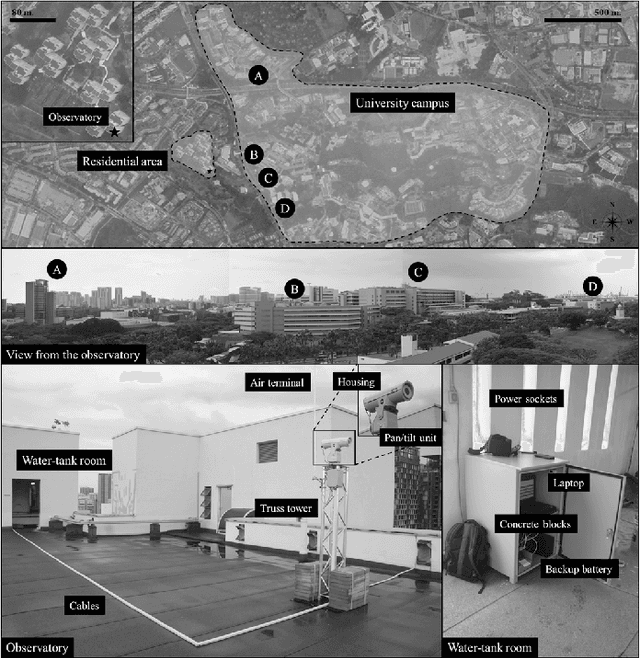
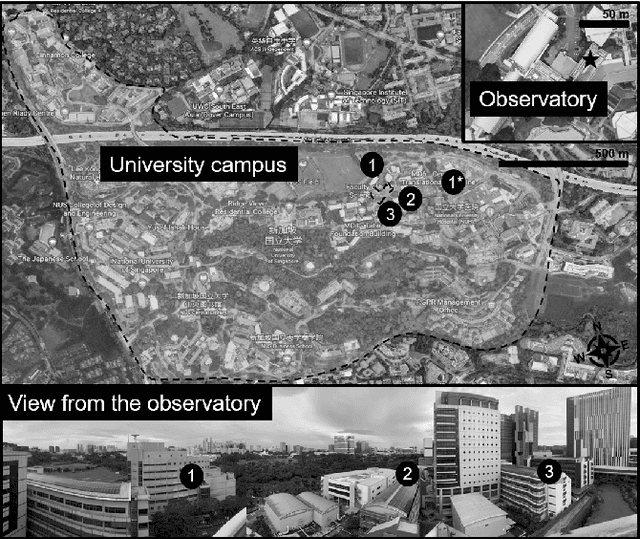
Abstract:This work presents the analysis of semantically segmented, longitudinally, and spatially rich thermal images collected at the neighborhood scale to identify hot and cool spots in urban areas. An infrared observatory was operated over a few months to collect thermal images of different types of buildings on the educational campus of the National University of Singapore. A subset of the thermal image dataset was used to train state-of-the-art deep learning models to segment various urban features such as buildings, vegetation, sky, and roads. It was observed that the U-Net segmentation model with `resnet34' CNN backbone has the highest mIoU score of 0.99 on the test dataset, compared to other models such as DeepLabV3, DeeplabV3+, FPN, and PSPnet. The masks generated using the segmentation models were then used to extract the temperature from thermal images and correct for differences in the emissivity of various urban features. Further, various statistical measure of the temperature extracted using the predicted segmentation masks is shown to closely match the temperature extracted using the ground truth masks. Finally, the masks were used to identify hot and cool spots in the urban feature at various instances of time. This forms one of the very few studies demonstrating the automated analysis of thermal images, which can be of potential use to urban planners for devising mitigation strategies for reducing the urban heat island (UHI) effect, improving building energy efficiency, and maximizing outdoor thermal comfort.
District-scale surface temperatures generated from high-resolution longitudinal thermal infrared images
May 03, 2023Abstract:The paper describes a dataset that was collected by infrared thermography, which is a non-contact, non-intrusive technique to collect data and analyze the built environment in various aspects. While most studies focus on the city and building scales, the rooftop observatory provides high temporal and spatial resolution observations with dynamic interactions on the district scale. The rooftop infrared thermography observatory with a multi-modal platform that is capable of assessing a wide range of dynamic processes in urban systems was deployed in Singapore. It was placed on the top of two buildings that overlook the outdoor context of the campus of the National University of Singapore. The platform collects remote sensing data from tropical areas on a temporal scale, allowing users to determine the temperature trend of individual features such as buildings, roads, and vegetation. The dataset includes 1,365,921 thermal images collected on average at approximately 10 seconds intervals from two locations during ten months.
Longitudinal thermal imaging for scalable non-residential HVAC and occupant behaviour characterization
Nov 17, 2022Abstract:This work presents a study on the characterization of the air-conditioning (AC) usage pattern of non-residential buildings from thermal images collected from an urban-scale infrared (IR) observatory. To achieve this first, an image processing scheme, for cleaning and extraction of the temperature time series from the thermal images is implemented. To test the accuracy of the thermal measurements using IR camera, the extracted temperature is compared against the ground truth surface temperature measurements. It is observed that the detrended thermal measurements match well with the ground truth surface temperature measurements. Subsequently, the operational pattern of the water-cooled systems and window AC units are extracted from the analysis of the thermal signature. It is observed that for the water-cooled system, the difference between the rate of change of the window and wall can be used to extract the operational pattern. While, in the case of the window AC units, wavelet transform of the AC unit temperature is used to extract the frequency and time domain information of the AC unit operation. The results of the analysis are compared against the indoor temperature sensors installed in the office spaces of the building. It is realized that the accuracy in the prediction of the operational pattern is highest between 8 pm to 10 am, and it reduces during the day because of solar radiation and high daytime temperature. Subsequently, a characterization study is conducted for eight window/split AC units from the thermal image collected during the nighttime. This forms one of the first studies on the operational behavior of HVAC systems for non-residential buildings using the longitudinal thermal imaging technique. The output from this study can be used to better understand the operational and occupant behavior, without requiring to deploy a large array of sensors in the building space.
Are Ensemble Classifiers Powerful Enough for the Detection and Diagnosis of Intermediate-Severity Faults?
Jul 08, 2020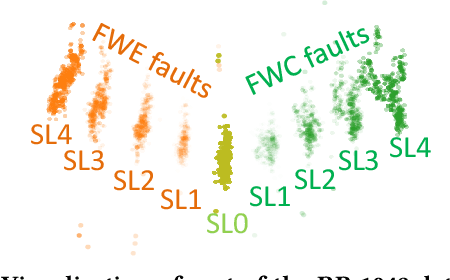

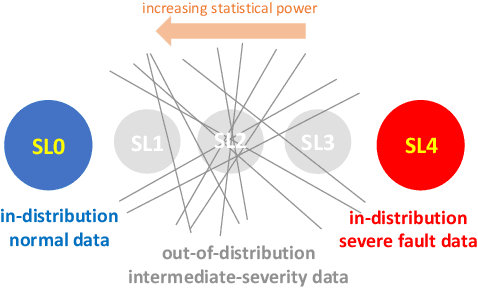
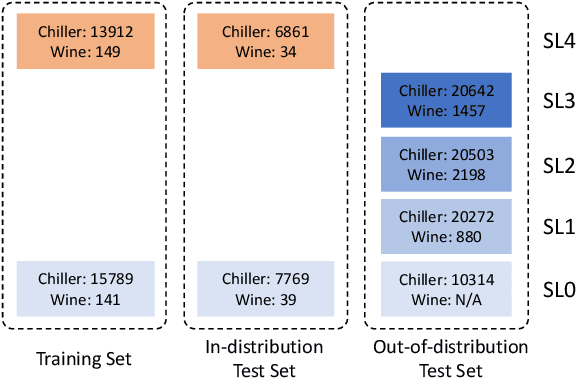
Abstract:Intermediate-Severity (IS) faults present milder symptoms compared to severe faults, and are more difficult to detect and diagnose due to their close resemblance to normal operating conditions. The lack of IS fault examples in the training data can pose severe risks to Fault Detection and Diagnosis (FDD) methods that are built upon Machine Learning (ML) techniques, because these faults can be easily mistaken as normal operating conditions. Ensemble models are widely applied in ML and are considered promising methods for detecting out-of-distribution (OOD) data. We identify common pitfalls in these models through extensive experiments with several popular ensemble models on two real-world datasets. Then, we discuss how to design more effective ensemble models for detecting and diagnosing IS faults.
EnergyStar++: Towards more accurate and explanatory building energy benchmarking
Oct 30, 2019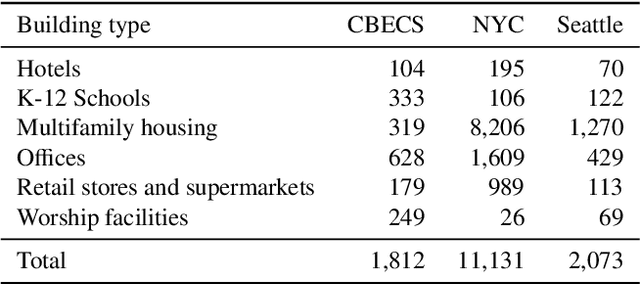


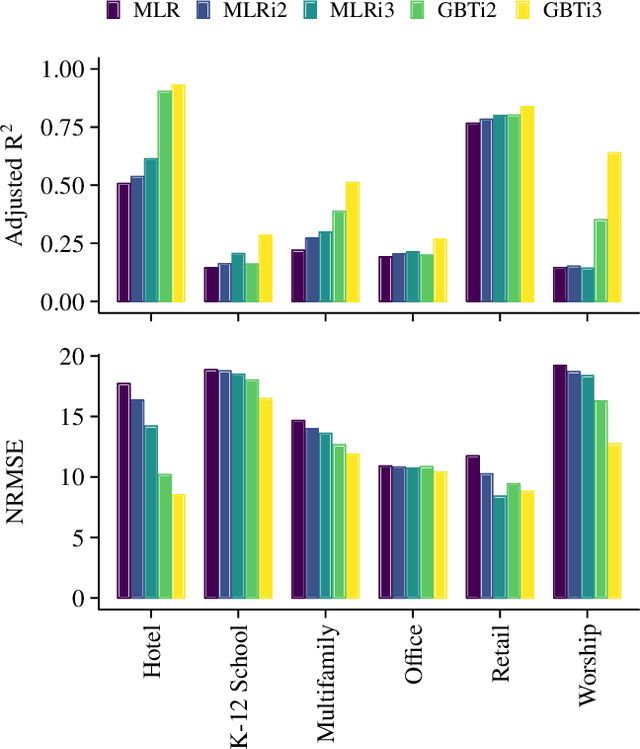
Abstract:Building energy performance benchmarking has been adopted widely in the USA and Canada through the Energy Star Portfolio Manager platform. Building operations and energy management professionals have long used a simple 1-100 score to understand how their building compares to its peers. This single number is easy to use, but is created by inaccurate linear regression (MLR) models. This paper proposes a methodology that enhances the existing Energy Star calculation method by increasing accuracy and providing additional model output processing to help explain why a building is achieving a certain score. We propose and test two new prediction models: multiple linear regression with feature interactions (MLRi) and gradient boosted trees (GBT). Both models have better average accuracy than the baseline Energy Star models. The third order MLRi and GBT models achieve 4.9% and 24.9% increase in adjusted R2, respectively, and 7.0% and 13.7% decrease in normalized root mean squared error (NRMSE), respectively, on average than MLR models for six building types. Even more importantly, a set of techniques is developed to help determine which factors most influence the score using SHAP values. The SHAP force visualization in particular offers an accessible overview of the aspects of the building that influence the score that non-technical users can readily interpret. This methodology is tested on the 2012 Commercial Building Energy Consumption Survey (CBECS)(1,812 buildings) and public data sets from the energy disclosure programs of New York City (11,131 buildings) and Seattle (2,073 buildings).
A Queuing Approach to Parking: Modeling, Verification, and Prediction
Aug 29, 2019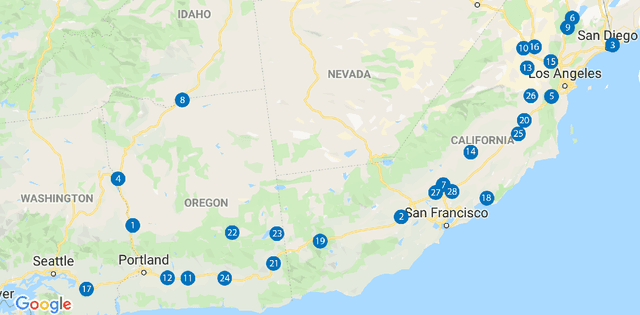
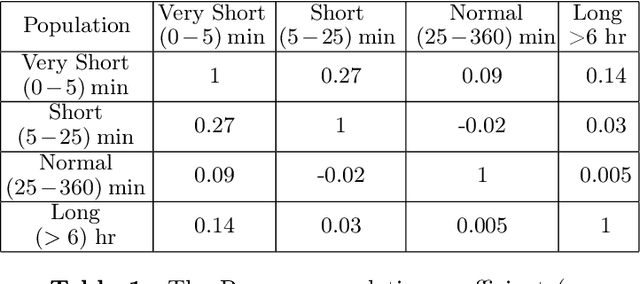
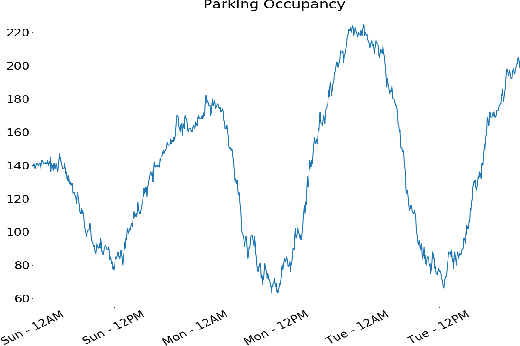
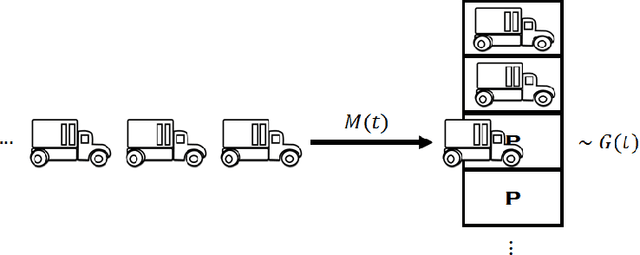
Abstract:We present a queuing model of parking dynamics and a model-based prediction method to provide real-time probabilistic forecasts of future parking occupancy. The queuing model has a non-homogeneous arrival rate and time-varying service time distribution. All statistical assumptions of the model are verified using data from 29 truck parking locations, each with between 55 and 299 parking spots. For each location and each spot the data specifies the arrival and departure times of a truck, for 16 months of operation. The modeling framework presented in this paper provides empirical support for queuing models adopted in many theoretical studies and policy designs. We discuss how our framework can be used to study parking problems in different environments. Based on the queuing model, we propose two prediction methods, a microscopic method and a macroscopic method, that provide a real-time probabilistic forecast of parking occupancy for an arbitrary forecast horizon. These model-based methods convert a probabilistic forecast problem into a parameter estimation problem that can be tackled using classical estimation methods such as regressions or pure machine learning algorithms. We characterize a lower bound for an arbitrary real-time prediction algorithm. We evaluate the performance of these methods using the truck data comparing the outcomes of their implementations with other model-based and model-free methods proposed in the literature.
Detecting and Diagnosing Incipient Building Faults Using Uncertainty Information from Deep Neural Networks
Feb 18, 2019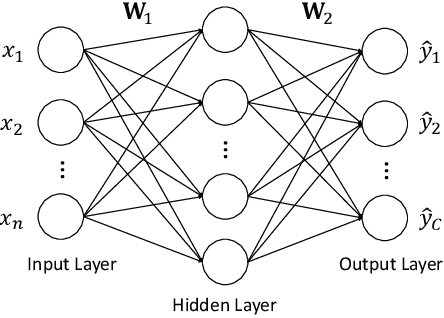
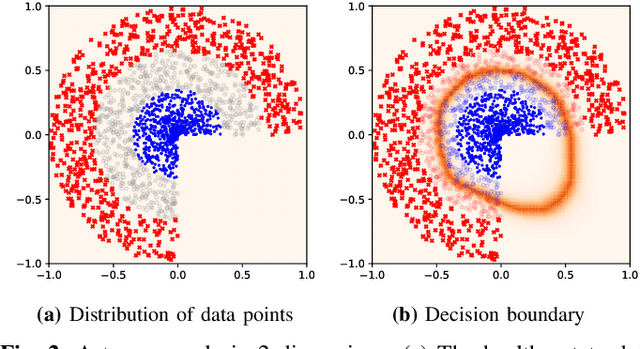
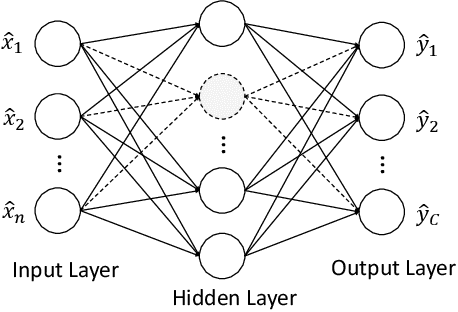
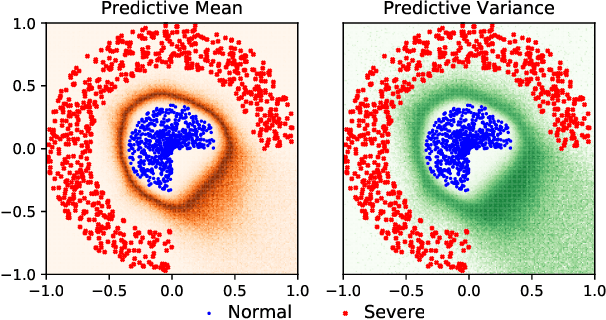
Abstract:Early detection of incipient faults is of vital importance to reducing maintenance costs, saving energy, and enhancing occupant comfort in buildings. Popular supervised learning models such as deep neural networks are considered promising due to their ability to directly learn from labeled fault data; however, it is known that the performance of supervised learning approaches highly relies on the availability and quality of labeled training data. In Fault Detection and Diagnosis (FDD) applications, the lack of labeled incipient fault data has posed a major challenge to applying these supervised learning techniques to commercial buildings. To overcome this challenge, this paper proposes using Monte Carlo dropout (MC-dropout) to enhance the supervised learning pipeline, so that the resulting neural network is able to detect and diagnose unseen incipient fault examples. We also examine the proposed MC-dropout method on the RP-1043 dataset to demonstrate its effectiveness in indicating the most likely incipient fault types.
A One-Class Support Vector Machine Calibration Method for Time Series Change Point Detection
Feb 18, 2019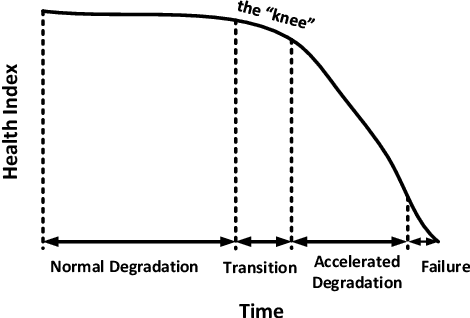
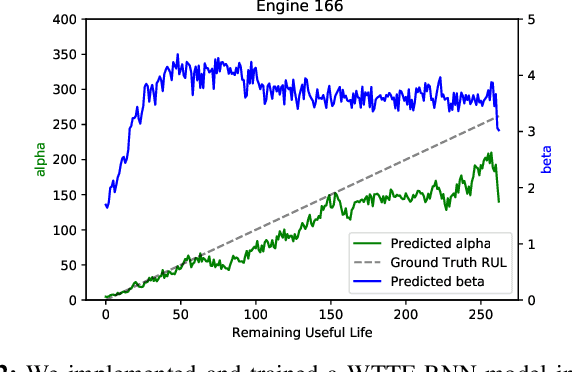

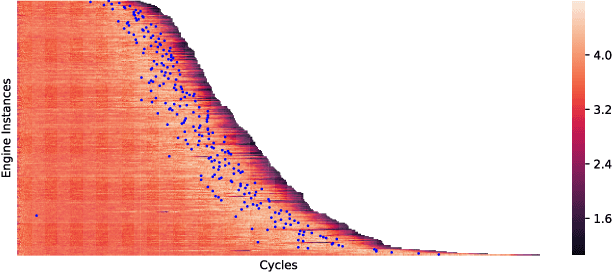
Abstract:It is important to identify the change point of a system's health status, which usually signifies an incipient fault under development. The One-Class Support Vector Machine (OC-SVM) is a popular machine learning model for anomaly detection and hence could be used for identifying change points; however, it is sometimes difficult to obtain a good OC-SVM model that can be used on sensor measurement time series to identify the change points in system health status. In this paper, we propose a novel approach for calibrating OC-SVM models. The approach uses a heuristic search method to find a good set of input data and hyperparameters that yield a well-performing model. Our results on the C-MAPSS dataset demonstrate that OC-SVM can also achieve satisfactory accuracy in detecting change point in time series with fewer training data, compared to state-of-the-art deep learning approaches. In our case study, the OC-SVM calibrated by the proposed model is shown to be useful especially in scenarios with limited amount of training data.
Low-dimensional Models in Spatio-Temporal Wind Speed Forecasting
Mar 04, 2015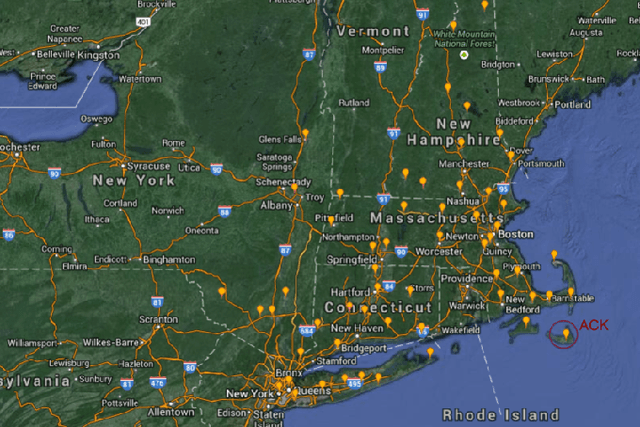
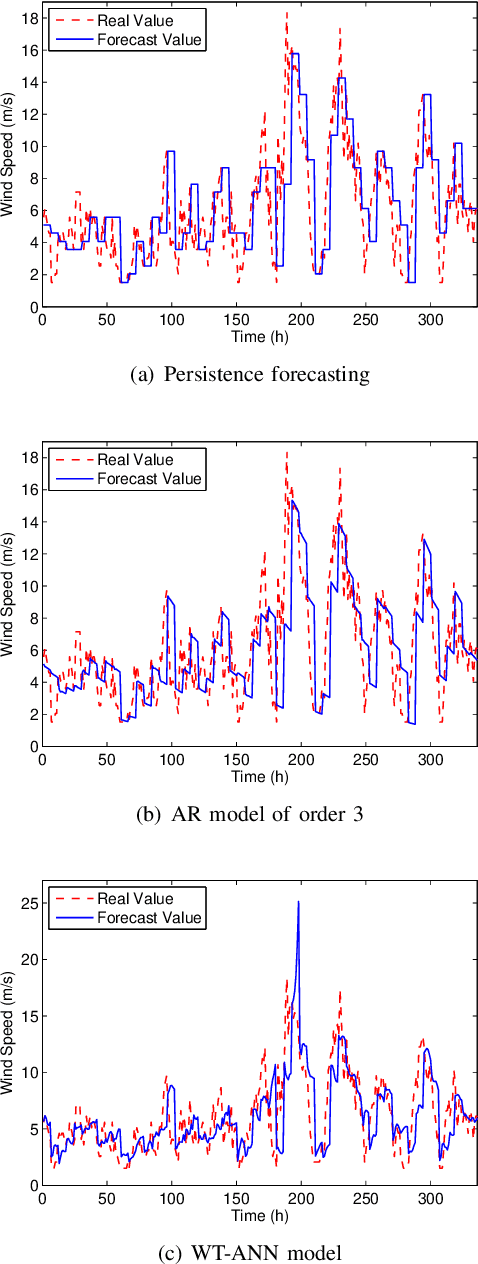
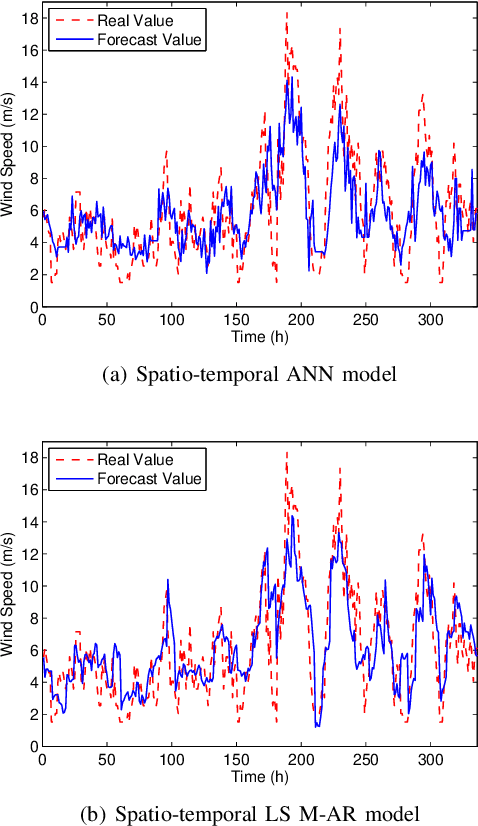
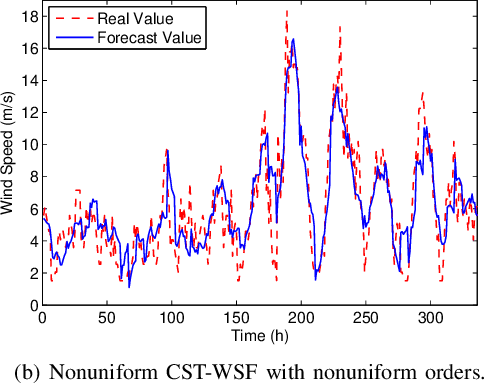
Abstract:Integrating wind power into the grid is challenging because of its random nature. Integration is facilitated with accurate short-term forecasts of wind power. The paper presents a spatio-temporal wind speed forecasting algorithm that incorporates the time series data of a target station and data of surrounding stations. Inspired by Compressive Sensing (CS) and structured-sparse recovery algorithms, we claim that there usually exists an intrinsic low-dimensional structure governing a large collection of stations that should be exploited. We cast the forecasting problem as recovery of a block-sparse signal $\boldsymbol{x}$ from a set of linear equations $\boldsymbol{b} = A\boldsymbol{x}$ for which we propose novel structure-sparse recovery algorithms. Results of a case study in the east coast show that the proposed Compressive Spatio-Temporal Wind Speed Forecasting (CST-WSF) algorithm significantly improves the short-term forecasts compared to a set of widely-used benchmark models.
 Add to Chrome
Add to Chrome Add to Firefox
Add to Firefox Add to Edge
Add to Edge